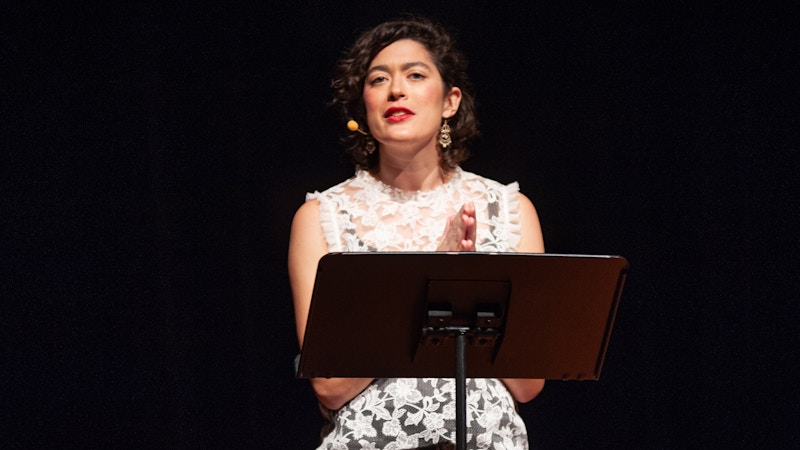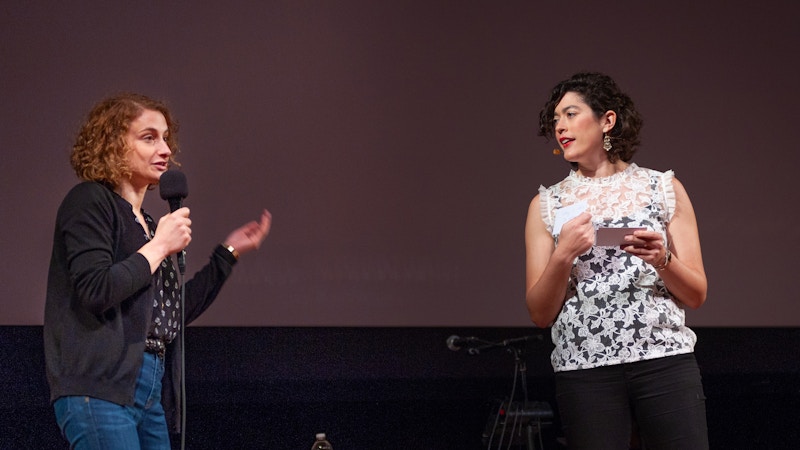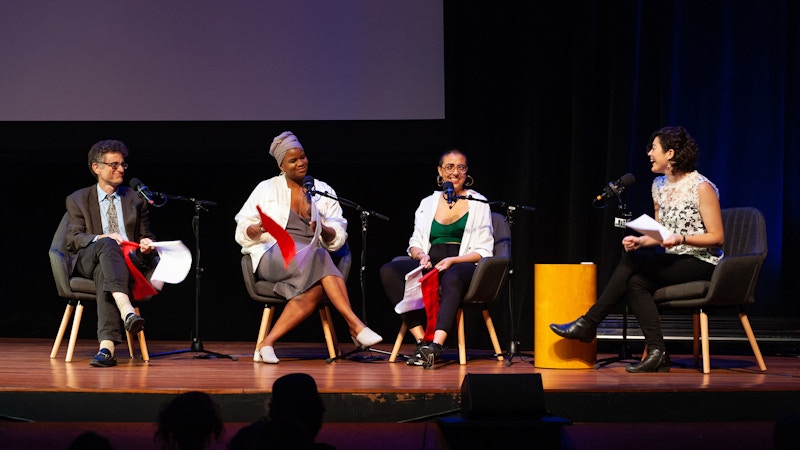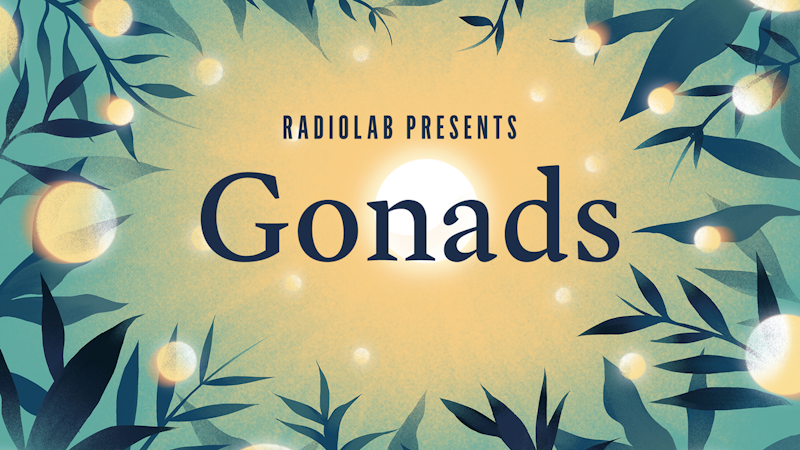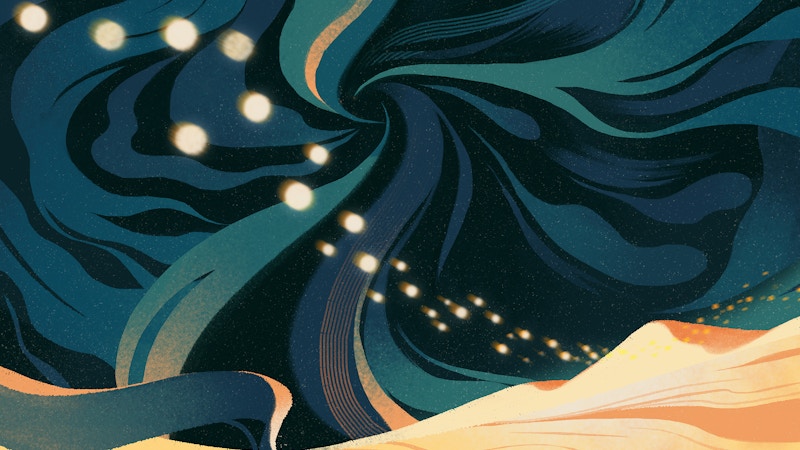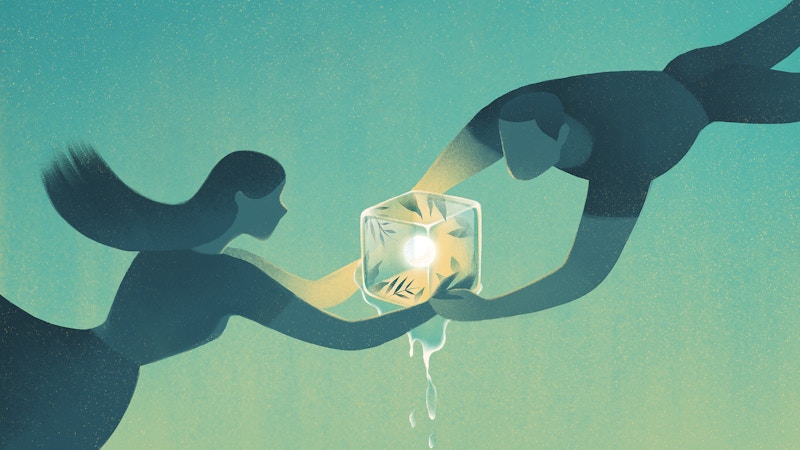
Radiolab Tackles the Epic Journey of Reproduction
In June 2015, the U.S. Supreme Court legalized gay marriage across the country, putting the traditional definition of a couple — and by extension, a parent — under scrutiny. Around the same time, at the WNYC headquarters in lower Manhattan, Radiolab producer Molly Webster was contemplating similar issues for an upcoming episode, researching the complicated dynamics among egg donors, surrogates and the people who employed them. The result was “Birthstory,” which aired later that year. The episode tells the story of Tal and his partner, Amir, as well as their Ukrainian egg donor, and the two Indian surrogates — so that both men could have their own biological offspring — living in Nepal who carried their three future children to term. It served as the inspiration for Webster’s most recent endeavor, a six-part series called “Gonads.”
Presented by WNYC’s Radiolab and hosted by Webster, “Gonads” examines the evolutionary drive to procreate, magnifying the chaotic cellular processes that occur under the surface of all of us, and uncovers what it takes to keep our species going. Webster, along with Pat Walters, Matt Kielty, and Rachael Cusick, produces the show, which is overseen by Radiolab co-host Jad Abumrad.
Webster initially imagined “Gonads” as an opportunity to indulge her fascination with families and siblings and to approach the topic from biological, technological and sociological angles. But while researching the science of fertilization and reproduction to determine possible story arcs, Webster heard two things that would ultimately change everything: “If you think egg freezing is interesting, then you need to talk to someone about ovary freezing,” and “Gonads are magical organs.” The latter statement, from ovarian biologist Kutluk Oktay of the Yale University School of Medicine, drove Webster to try to understand why Oktay held that organ in such high esteem and sent her down a research rabbit hole into the world of sex determination. “What you find when you stand in that world is the rules you thought applied in this space that you learned in fourth grade biology don’t apply,” she says. “New science is shaking things up. I was pretty shocked when I found out that XX does not [necessarily] equal girl. Why are people not talking about that?’”
Molly Webster addresses a sold-out crowd at Radiolab’s “Sex Ed” event at the NYU Skirball Center. Credit: Janice Yi
Gradually, stories based around human reproduction became a series about how the very elements of our body composition that we thought defined our sex, like having two X chromosomes, aren’t as simple as they may have seemed. “So now I am standing in a space that’s very interesting and kind of, on some level, far away from where I started,” Webster says.
The first episode, “The Primordial Journey,” released on June 15, tells the story of 40 germ cells as they make their two-week-long trek from the tail end of the embryo (formally called the allantois) to the middle of the embryo, where each cell would become either an egg or a sperm. But if they’re distracted or pulled away from the task at hand — say, they receive a signal luring them to become liver cells — then the germ cells will become neither an egg nor a sperm. The episode, she explained, establishes the cells’ endless potential and their determination to leave one part of the embryo and reach their final destination. “These cells are the last cells in the body to commit to a path,” Webster explains. “Every other cell at this point knows that they’re a liver, or a heart, or a neuron, or a spleen, but these cells hold on to the ability to become egg or sperm or any other cell in the body. It’s sort of about the limitless possibility we can hold within us.”
Webster says in “The Primordial Journey” that “after the embryo grows, after the baby gets born, after that baby goes through puberty and one day maybe decides to have a kid, these cells, which are present at the very beginning — these cells are in charge of making the next generation of you.”
Which makes that journey, or what Oktay refers to as “The Great Migration,” all the more of an epic adventure.
To create a sonically engrossing representation of this microscopic process, Webster first put together a storyboard to establish the episodes’ structure, as well as a mood board — or in this case, a Google doc — to assemble images that would reflect the desired tone for the series. For episode one, her mood board contained a still from Blade Runner 2049. Another image depicted a fish that had a piece of its skin cut out to reveal red eggs, which Webster likened to “pulling back the curtain” to show our true animal nature and how our bodies are vessels for the future of humanity.
The first five episodes of the series adhere to the typical format of Radiolab — interview-based, full of nuanced sound effects and underscored by unique theme music. The final episode, which aired in late July, is a recording of a live event held at New York University’s Skirball Center in May 2018. A reimagining of a high-school “sex ed” class, the show featured comedians, thought leaders, singers, storytellers, and other artists facing real questions from teenagers and adults and answering them through the lens of their respective areas of expertise. “Sex ed class is a live event — kids, teachers, parents, in a real place, trying to talk back and forth,” Webster explains. “Doing it live felt like it captured the spirit of sex ed, like putting audience members back in a classroom.”
Most of us have gone through some version of sex ed, but it’s unlikely that what we heard from our teachers was anywhere near the full story. Webster hopes that the podcast will reach listeners of all ages from around the country — even those who haven’t already been introduced to the basics of birds and the bees — and challenge them to reconsider everything they ever thought they knew about reproduction, gender and the power of the gonads.
After all, they’re magical.
Radiolab Presents: Gonads is a Science Sandbox-supported program. You can listen to all of the episodes here.
_____
Stories of Impact highlight the real-world influences of Science Sandbox projects through personal narratives, videos and interviews. Discover more stories here.
